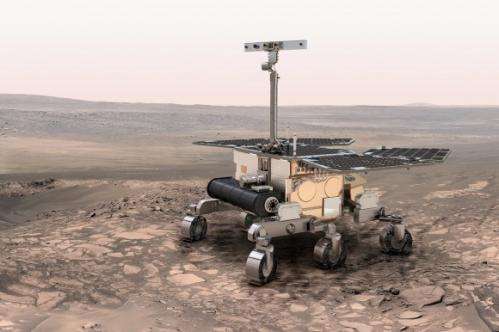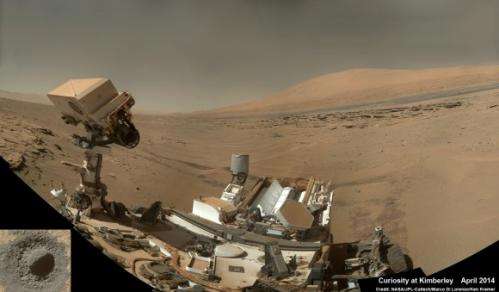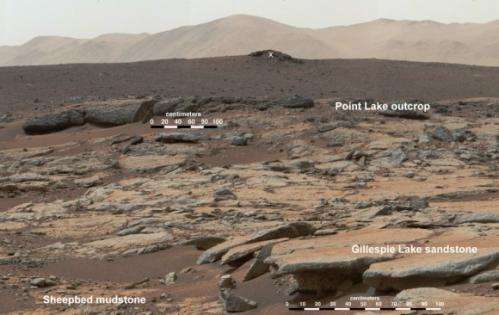Where should the European Mars rover land?

Picking a landing site on Mars is a complex process. There's the need to balance scientific return with the capabilities of whatever vehicle you're sending out there. And given each mission costs millions (sometimes billions) of dollars—and you only get one shot at landing—you can bet mission planners are extra-cautious about choosing the right location.
A recent paper in Eos details just how difficult it is to choose where to put down a rover, with reference to the upcoming European ExoMars mission that will launch in 2018.
In March, scientists came together to select the first candidate landing sites and came up with four finalist locations. The goal of ExoMars is to look for evidence of life (whether past or present) and one of its defining features is a 2-meter (6.6-foot) drill that will be able to bore below the surface, something that the NASA Curiosity rover does not possess.
"Among the highest-priority sites are those with subaqueous sediments or hydrothermal deposits," reads the paper, which was written by Bradley Thomson and Farouk El-Baz (both of Boston University). Of note, El-Baz was heavily involved in landing site selection for the Apollo missions.
"For example," the paper continues, "some of the clearest morphological indicators of past aqueous activity are channel deposits indicative of past fluvial activity or the terminal fan, or delta deposits present within basins."
But no landing site selection is perfect. The scientists note that Curiosity, for all of its successes, seems unlikely to achieve its primary science objectives in its two-year mission because the commissioning phase took a while, and the rover moves relatively slowly.

That said, NASA has argued that the rover achieved its goal of finding past habitable environments already, with discoveries such as extensive evidence of a past potentially life-bearing lake now called Yellowknife Bay.
What could change the area of the landing could be using different types of entry, descent and landing technologies, the authors add. If the parachute opened depending on how far the spacecraft was from the ground—instead of how fast it was going—this could make the landing ellipse smaller.
This could place the rover "closer to targets of interest that are too rough for a direct landing and reducing necessary traverse distances," the paper says.

More information: The complete paper is availabler online: onlinelibrary.wiley.com/doi/10 … 002/2014EO350001/pdf
Source: Universe Today





















